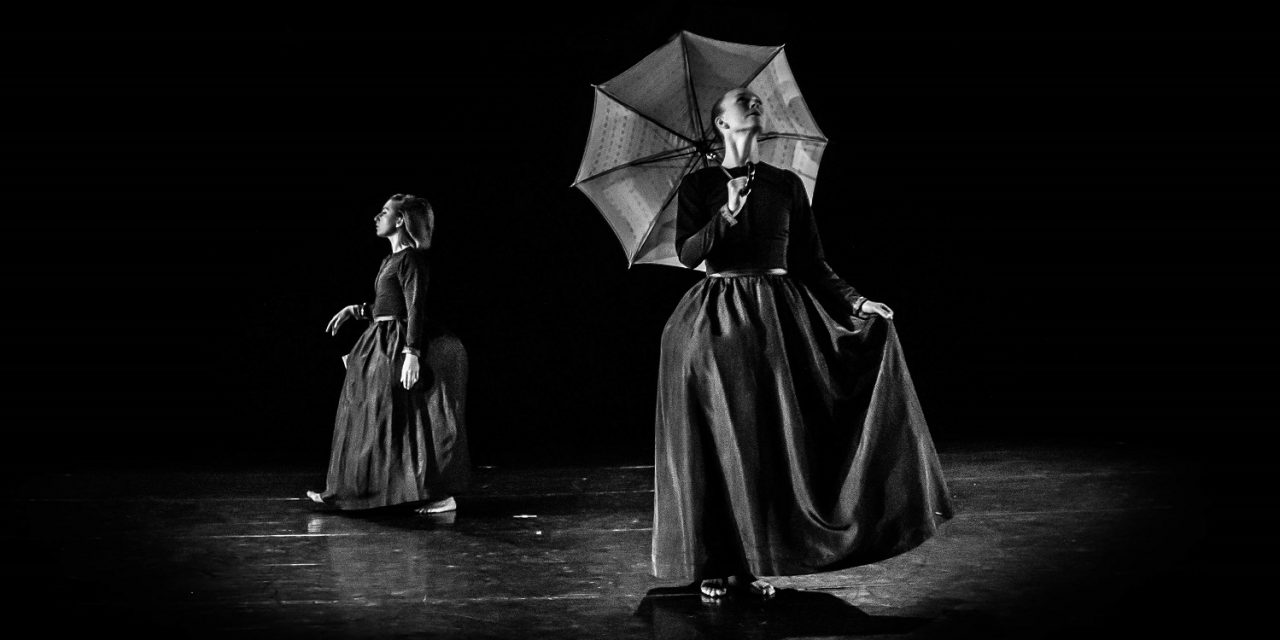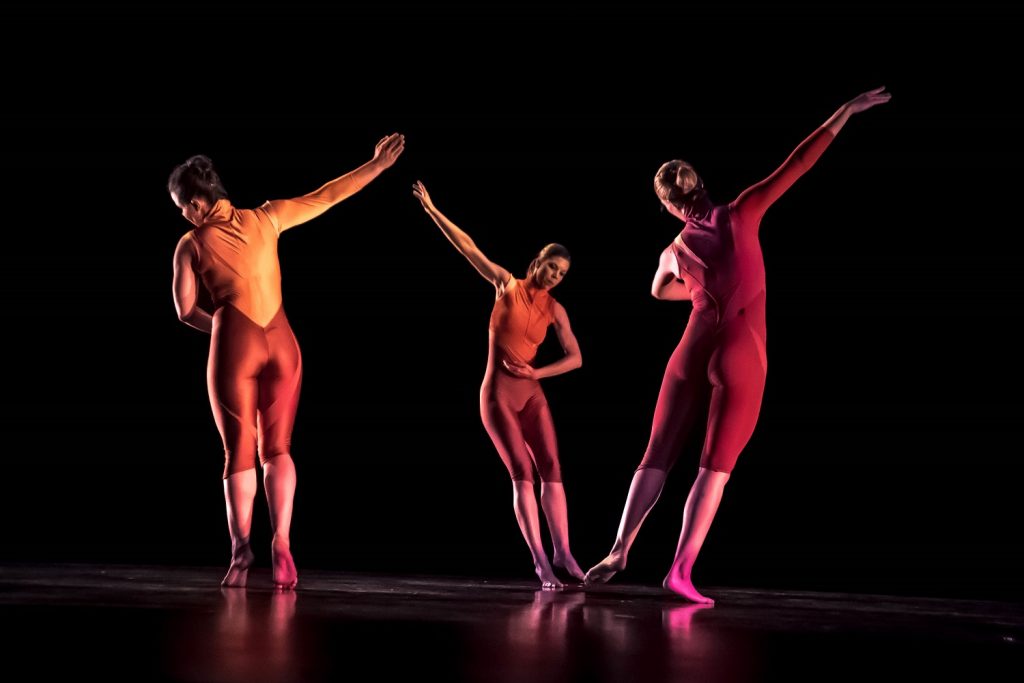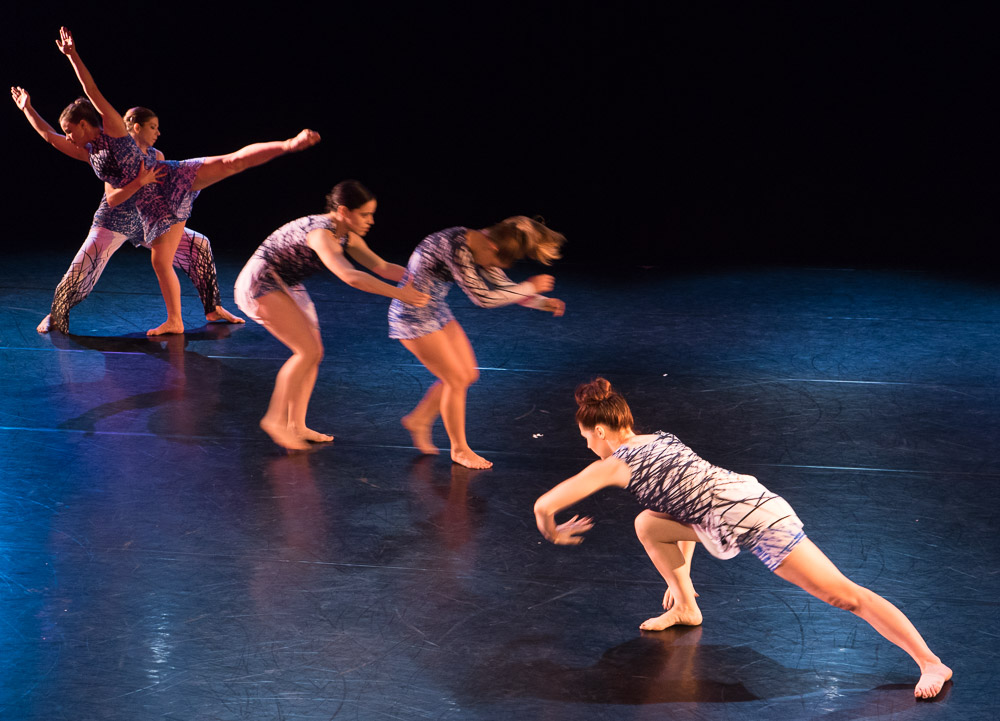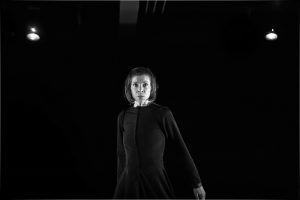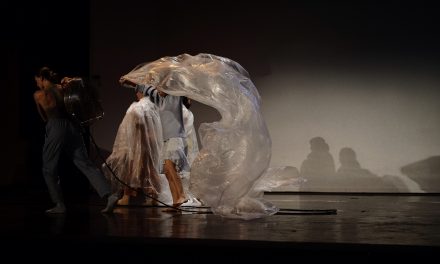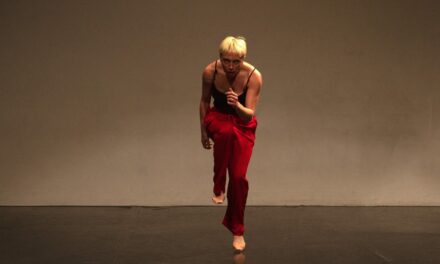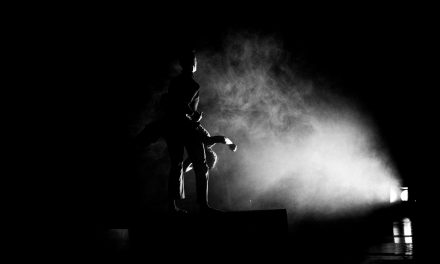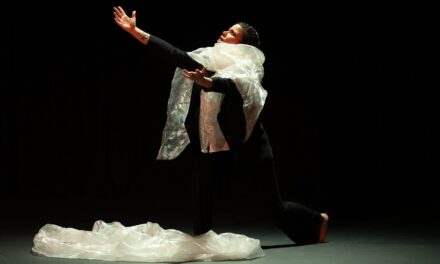Benita Bike DanceArt is in its 36th season and just presented its annual concert at the Martha B. Knoebel Dance Theater located in the Dance Center building at California State University, Long Beach. The program included one work by guest choreographer, Weslie Ching, and five by Benita Bike. As always, Bike’s detail in production values were flawless and her cast of dance artists remain strong.
Two works that I had reviewed previously, On Beat 3 and In The Garden, continued to stand out. The three women in On Beat 3 sailed through Bike’s fast paced choreography with ease and clarity. They ran backwards, stopped on a dime and dashed forward again while maintaining the constant rhythmic meter set by Per Andreasson’s Tin Play. The lighting by Shawn Fidler was especially notable and his timing for the surprise ending was perfect. Fidler’s choices of colors added to the beautiful shades of red in the costumes designed by Diana MacNeil.
In The Garden remained somewhat mysterious with its ritualism and symbolism. Dark ed rocks were placed in different patterns, creating borders, boundaries and ceremonial circles. Two female dancers, representing statues were pulled onstage and placed upright. Their arms moved like tree branches in the wind before their bases were removed, releasing them to walk about freely. Adding to the mystery of who or what these five women were, was the music: two pieces by vocal group Philomela and one by Eric Sammut as performed by Svet Stoyanov. In The Garden was an intriguing work that has matured very well.
Pushing Time was another fast-paced dance by Bike, unfortunately this one suffered a bit from its speed. The dancers always seemed rushed, which rang true to the title, but did not help the performance. The music was Chiel Meijering’s Waar is Mein Kind from the album A Century of Dutch Harmonium and other classical music selections. The costumes by Diana MacNeil were fascinating, as they appeared to shift in color as Fidler’s lighting changed hues. The blues in the material stood out during one section and then the black patterns became prominent; making them appear like different costumes. Perhaps this dance will settle with performance experience. The dancers Liza Barskaya, Rachele Donofrio, Sarah Gertler, Clare Kiklowicz, and Trudy Niess did their finest in attempting to keep time.
The music by Paul Schoenfield was the inspiration for Bike’s Schoenfield Dances. There was a Rag, a Fughetta, A Shuffle and a Boogie. Here too, parts felt rushed, but overall this is a strong work. I especially enjoyed the siesta section where Bike choreographed restful, lazy and restless sleeping habits. Another strength of this work was Bike’s not falling into stereotypical movement. Her Rag section felt angular instead of jazzy while Schoenfield’s Rag music sounded atonal, and Bike drove her dancers into a frenzied finale while the sweet boogie played.
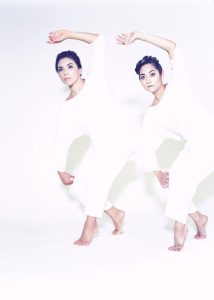
Kaita Mrazek, Nikki Pfeiffer in You (Or Someone Like You) by Weslie Ching – Photo: Arne Bajraktarevic
One of the highlights of the evening was the work entitled You (Or Someone Like You) by Santa Barbara based choreographer Weslie Ching. Ching is also a former member of Benita Bike DanceArt, performing with the company for three years, 2004-2007. She costumed her two dancers identically, both is flowing white and both brown haired women wore their hair in a similar shaped bun. From a distance they could be taken for twins. One by one, they ran across the stage, reappearing from the same entrance as before. Their movements mirrored each other and in one beautiful canon-like phrase, one dancer only one beat ahead of the other. The dance was heavy with entrances and exits, but it worked because of how Ching designed it. The two very talented dancers were Niki Powell and Robin Wilson, and the powerful score was by Craig Leon.
In Old Postcards From Europe the cast was costumed in black dresses that became a symbol of solidarity for these five women. Bustles were added underneath the dresses for the opening section and the five carried pastel umbrellas. These women of Munich began strolling separately on their way to a gathering but were soon forced together to pass through narrow passageways. The bustles removed, three sisters in Vienna smiled for photos, but their true conflicting personalities were soon revealed. The final scene was tragic, as five Jewish women of Budapest struggled unsuccessfully to survive.
The tense undercurrent of Old Postcards From Europe was what gave this work its strength. The relationships between Bike’s characters, the forces from inside and outside their lives, coupled with the music and costumes, all crystalized into a united statement. It was, however, Bike’s simplicity in the choices of movement that gave this piece its power. The costumes were designed by Glynna Goff and Diana MacNeil, and the cast included Liza Barskaya, Rachele Donofrio, Sarah Gertler, Clare Kiklowicz, and Trudy Niess. Shawn Fidler did an excellent job throughout, creating unique lighting environments for each work.
For more information on Benita Bike DanceArt, click here.
Feature Photo: Doug Kiklowicz

